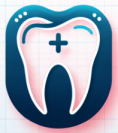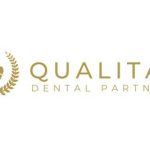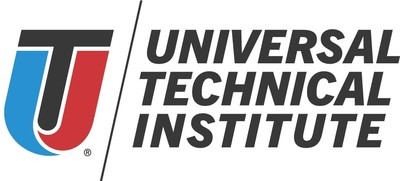INTRODUCTION
In the past 10 a long time, material use ailments (SUDs) and opioid misuse have triggered an overabundance of key societal issues in the United States. In accordance to the Nationwide Institute on Drug Abuse, even though “most men and women just take prescription drugs responsibly, an estimated 52 million people have made use of prescription medicine for nonmedical factors at the very least after in their lifetimes.”1 In accordance to the Centre for Condition Control, prescription drug misuse has elevated by 250% above 20 decades, and drug overdose loss of life statistics quadrupled given that 1999, with a 5% increase between 2018 and 2019.2
The National Survey on Drug Use and Health and fitness estimates that even though about 12.4 million Individuals made use of prescription suffering relievers for nonmedical uses in 2009, 16.7 million persons older than 12 abused prescription agony-relieving medications in 2012.3 Among individuals aged 12 or older in 2020, 3.3% (or 9.3 million people) misused prescription soreness relievers, and 1.7% (or 4.8 million people) misused prescription benzodiazepines. In distinction to prescription drugs, 2020 info implies that 21.4% of folks aged 12 or more mature (or 59.3 million men and women) applied illicit medicine in the earlier year by itself.2
As dental gurus, we have broad expert tasks that are not only restricted to legal obligations. Our expert responsibilities include moral obligations arising from our commitments to sufferers, to culture, and to our skilled beliefs. This report will aim on dental providers’ expert responsibilities concerning material use and addiction among the dental people. This report does not intend to emphasis on the lawful tasks of dentists but relatively see our moral obligations as health care companies. Even though this sort of tasks may perhaps differ from a single geographic place to another, our generally shared ethical values and ethical responsibilities continue being the similar.
DENTISTRY, Suffering Aid, AND THE OPIOID Disaster
Customarily, dentistry has performed a foremost role in creating approaches for controlling acute agony and analgesia. The initial effective use of ether was by the dentist William Thomas Morton at Massachusetts Normal Clinic in 1846, major to a appreciable boost in the prevalence of dental operation. Opioids ended up broadly utilized to regulate postsurgical and acute dental suffering in a entirely unregulated natural environment, contributing to the country’s initial opioid crisis and the passage of the Harrison Narcotics Act of 1914. During the 1990s, dentists were being not as most likely as health care medical practitioners to be straight specific by pharmaceutical advertising companies since dentists hardly ever prescribe painkillers for serious, extensive-expression problems. The information showed that in the early times of the crisis, 1 in 16 postsurgical clients became addicted to opioids recommended following medical procedures.
THE ADA’S Initially Statement ON THE Disaster
In 2005, in reaction to the worsening state of the opioid crisis in the United States, the ADA unveiled its very first distinct direction on the situation of roles and specialist duties of dental gurus in the opioid crisis.4
The “Statement on Provision of Dental Procedure for Individuals with Compound Use Disorders” urged dentists to adopt scientific methods to improved benchmarks, especially to obtain material use history from individuals become professional about substance abuse diseases use their skilled judgment in this area and become familiar with local community compound abuse methods and other voluntary, proactive steps.5 Though this very first step led to a substantial reduction in prescribing opioids, sadly, it did not have substantially affect on endeavours to display screen individuals and aid them in receiving treatment for their addiction.
Due to the fact then, added statements and directives have presented much more specific necessities, which includes mandating protocols and instruction for dentists to beat the opioid addiction crisis. The aim of this energy was not just to minimize the amount of opioids prescribed by dentists but to demand and empower them to develop into proactive in screening clients for SUDs and aiding them get the remedy they need.
THE ADA’S 2016 Guidance ON OPIOIDS
The 2016 statement went over and above simply encouraging dentists to take care of the opioid disaster at the stage of unique dental techniques.6 The statement mandated steps this sort of as acquiring a healthcare record that includes present prescription drugs and a record of compound abuse, being up to date with CDC recommendations for securely prescribing opioids, and employing prescription drug checking programs (PDMPs) beneath the auspices of the National Association of Point out Controlled Substances Authorities. Dentists were essential to talk about the misuse, abuse, storage, and disposal of opioids with their patients and take into consideration recommending nonsteroidal anti-inflammatory analgesics as the 1st-line therapy for pain management somewhat than opioids.5 When treating chronic dental discomfort, the statement suggests that dentists need to take into consideration referrals to soreness management specialists. The assertion also contained some authorized steering to reinforce how good screening strategies can protect dentists from liability associated with prescribing opioids. It suggests that dentists should really not be liable for prescribing opioids to clients with SUDs if they’ve created “good faith efforts” to realize compound abusers who “willfully” hid their situations.
THE ADA’S 2018 Plan ON OPIOID PRESCRIBING
The ADA’s 2018 Plan assertion carried out obligatory “continuing education” for dentists on prescribing opioids, emphasizing avoiding overdoses, dependency, and diversion.7 It also supported restricting prescriptions for opioids to 7 times for acute pain and enhancing the good quality, integrity, and interoperability of condition PDMPs. This coverage kickstarted more proactive and efficient actions by dentists to combat opioid habit in their sufferers.
Minimize IN Opioid PRESCRIBING SENDS Difficulty UNDERGROUND
In accordance to the CDC, opioid prescriptions lowered by 43% from 2011 by means of 2018 and proceed to tumble yearly.8 Restrictions on prescribing and prescription database use have merged to reduce the incidence of SUDs induced or worsened by healthcare pros. That said, a whopping 35% of opioid overdose deaths are nevertheless brought on by misuse of prescription drugs recommended by doctors and dentists. In addition, professional medical specialists prescribing opioids is just a person variable in the skyrocketing incidence of opioid usage, which is why the ADA encourages dentists to go past restraint in prescribing opioids to employing affirmative measures to beat the trouble. According to the President’s Fee on Combating Drug Habit and the Opioid Disaster, the root results in of the trouble are complex and traceable to at least 30 distinct components.9 A single of the factors is the superior amount of underinsured or uninsured individuals in the United States who count on pain aid for serious conditions when they simply cannot find the money for health care treatment method. This population has mixed the tiny quantities of painkillers they can acquire from doctors with black-sector opioids this kind of as heroin and illicit fentanyl to lessen serious soreness. That’s why dentists need to be really watchful not to contribute to this dilemma by unnecessarily prescribing even smaller amounts of opioids to folks with material abuse problems or habit.
DENTISTS AND THE OPIOID Disaster
The info from many sources reveals that the nonmedical use of prescription medications is prevalent. Combating this phenomenon will need steady effort from medical professionals, dentists, and other prescribers pharmaceutical scientists and authorities nonprofit organizations.
Even though some dentists write prescriptions for opioids at an alarming amount, an frustrating bulk of dental vendors training diligence and caution although applying opioids and benzodiazepines in the class of dental treatment. Our profession has created excellent progress in the avoidance of chemical dependency and abuse among the dental clients and will proceed to do so in the upcoming.
REFERENCES
1. U.S. Office of Wellness and Human Services: Compound Abuse and Mental Well being Companies Administration. Essential Substance Use and Mental Overall health Indicators in the United States: Benefits from the 2020 Countrywide Survey on Drug Use and Health. 2021. PEP21-07-01-003.
2. Countrywide Institute on Drug Abuse. Misuse of prescription medication study report: Overview. 2020. Accessed November 1, 2022.
3. Substance Abuse and Psychological Health Expert services Administration. Success from the 2010 Countrywide Survey on Drug Use and Well being: Summary of Nationwide Findings. 2011. SMA-11-4658.
4. American Dental Affiliation. Assertion on provision of dental procedure for individuals with material use diseases. 2022. Accessed November 28, 2022. https://www.ada.org/about/governance/current-procedures#substanceusedisorders
5. National Affiliation of Condition Managed Substances Authorities. Prescription checking. Accessed October 25, 2022.
6. American Dental Association. Oral analgesics for acute dental agony. Accessed November 2, 2022.
7. American Dental Affiliation. American Dental Association announces new coverage to fight opioid epidemic. 2018. Accessed November 4, 2022.
dental-association-announces-new-coverage-to-combat-opioid-epidemic
8. Middle for Disease Management and Prevention. U.S. Dispensing Amount Map. 2022. Accessed Oct 30, 2022.
drugoverdose/rxrate-maps/index.html.
9. Countrywide Archives. President’s Fee on Combating Drug Habit and the Opioid Crisis. 2017. Accessed November 16, 2022
ABOUT THE AUTHORS
Dr. Ruvins acquired his DDS degree from New York University. He retains master’s degrees in oral implantology, overall health treatment administration, finance, and habit counseling. Dr. Ruvins co-launched Genesis Behavioral Wellness Group and the Lighthouse Recovery. He is a colorado certified habit counselor working towards in Denver. He can be arrived at through e-mail at [email protected].
Ms. Brydon earned her master’s diploma in social operate from Denver College. She is a certified scientific social employee and a certified learn addiction counselor in the Point out of Colorado. She is the founder of Road to Me Restoration centre and co-founder of Genesis Behavioral Overall health and scientific director of the Lighthouse Restoration. She can be attained by means of e mail at [email protected].
Disclosure: The authors report no disclosures.
Showcased Image Credit history: Fizkes/Shutterstock.com.








